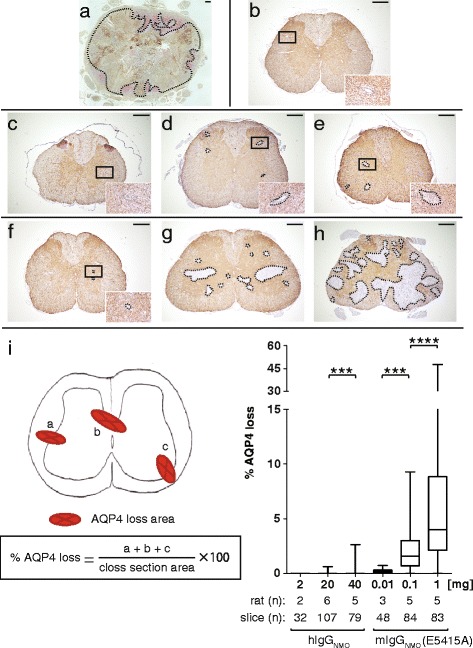Fig. 2.

Loss of AQP4 in spinal cord legions occurs in a dose-dependent manner. The comparison of lesion size in response to doses of anti-AQP4 antibody is shown. Initial photograph (a) is a typical case of NMO patient for better understanding, showing extensive loss of AQP4 in the entire spinal cord. There are multiple rosette-like depositions of complement C9neo especially evident in the gray matter and perivascular areas of white matter, where vasculocentric loss of AQP4 is relatively enriched (a), especially in the gray matter and perivascular polarized expression of normal AQP4 staining (b). In hIgGNMO rats (c−e) and in E5415A rats (f−h), loss of AQP4 was observed particularly at the corticomedullary junctions. The lesions gradually enlarged in a hIgGNMO dose-dependent manner, from 2 mg (c), 20 mg (d), to 40 mg (e). Similarly, the lesion enlarged in E5415A rats, from 0.01 mg (f), 0.1 mg (g), to 1 mg (h), in a dose-dependent manner. The region showing AQP4 loss in the 0.1 mg and 1 mg E5415A groups (g−h) was markedly greater than that observed in the hIgGNMO group (c−e). The maximum size of the region of AQP4 loss in the 1 mg E5415A group (h) was comparable to that seen in an NMO postmortem case (a). The percentage of AQP4 loss in spinal cord sections was calculated in each group (i). The ratio in the higher IgG group of hIgGNMO or E5415A was significantly higher than that in the lower IgG groups. Scale bar = 300 μm
